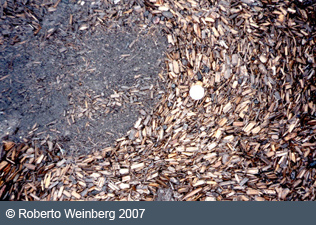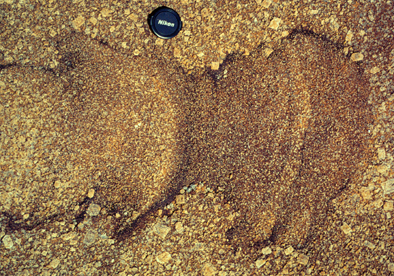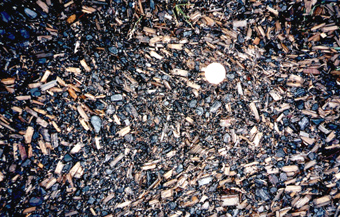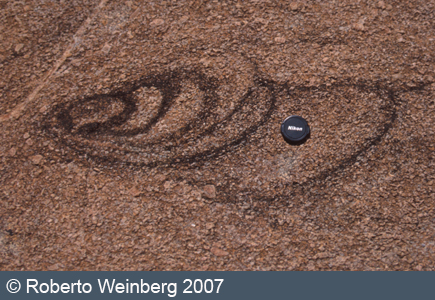| Granite
Flowage Structures and Storm in Park Analogue
An important issue in granite studies is the process of granite fractionation and the formation of cumulate textures. This is because granitic magmas are viscous and the process of crystal settling from the magma considerably less efficient than in low viscosity mafic magmas. Several processes of melt extraction have been proposed (Sawyer, 2000; John and Blundy, 1997). Here, I suggest that the flow pattern of twigs in a park after a storm may be analogous to the process of separation of megacrysts from a magma, as magma flows above the rough base of a magma chamber. Simply put, crystals get caught as they flow above the rough surface, forming new protuberances that will catch other crystals as they flow past. At the base of the chamber, another effect will also promote this process: friction between the magma and the solid, irregular bottom will cause magma velocity to drop, allowing crystals to settle and attach to pre-existing crystals. Twigs, carried by storm water oriented themselves perpendicular to flow direction in the center of flow channels and parallel to the flow direction along the high shear margins. The end result was a aligned twigs defining semi-circular patterns akin to that described in the Tavares pluton. |
 A) Aligned twigs defining semi-circular pattern |
 B) Organized distribution of crystals in the Tavares magma chamber (Weinberg et al., 2001, Bull. Geol. Soc. Am.) |
 A) Aligned twigs defining semi-circular pattern |
 B) |